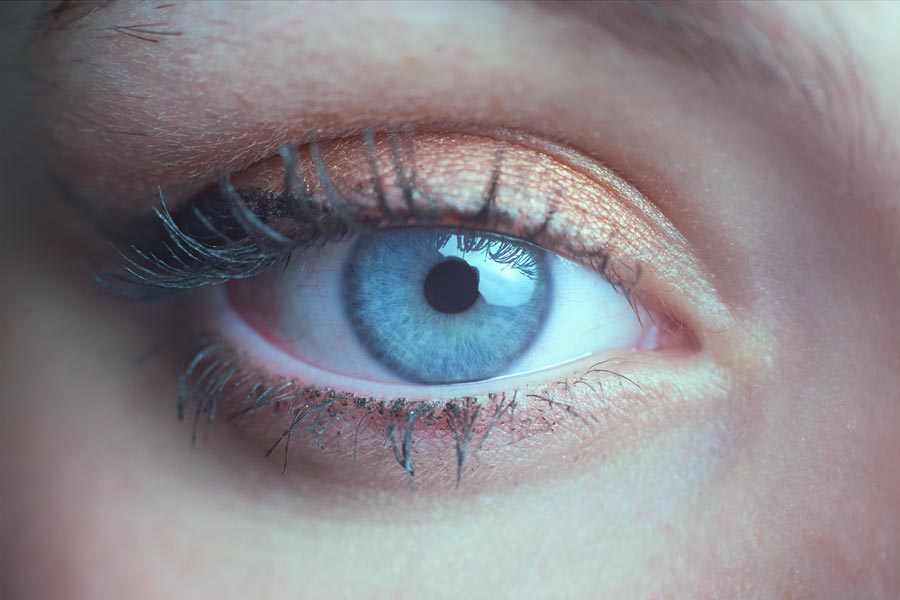Welcome back to another edition of the NHN Newsletter! We hope you’re still relishing the essence of Vorfreude from last week’s newsletter—finding joy in anticipation and embracing the moments leading up to something wonderful. This week, we delve into the world of eye protection, exploring the challenges posed by blue light and the roles of lutein and zeaxanthin in preserving the health of our lens and macula.
Understanding Blue Light and Eye Health
Blue light is a high-energy visible light with a wavelength between 380 and 500 nanometers. It is emitted not only by natural sources like the sun but also by digital devices such as smartphones, computers, and LED lights. While blue light is essential for regulating our sleep-wake cycle and mood, excessive exposure can lead to digital eye strain and may contribute to long-term eye health issues.
Prolonged exposure to blue light can cause symptoms like eye fatigue, dryness, blurred vision, and headaches. Moreover, studies suggest that chronic exposure to blue light may increase the risk of cataracts and age-related macular degeneration (AMD), a leading cause of vision loss among older adults.
Lutein and Zeaxanthin: The Eye’s Natural Protectors
Lutein and zeaxanthin are carotenoids found in high concentrations in the macula, a part of the retina responsible for sharp central vision. They are also the only carotenoids found in the lens of the eye. These nutrients act as natural antioxidants and filters, protecting the lens and macula from oxidative stress and harmful blue light.
Antioxidant Properties: Lutein and zeaxanthin are not only essential for protecting the macula from harmful blue light but also for combating oxidative stress throughout the eye. These powerful carotenoids act as natural antioxidants, effectively neutralising free radicals from prolonged blue light exposure. By doing so, they play a crucial role in reducing oxidative damage not only to lens proteins but also to delicate retinal cells. This dual action helps preserve visual acuity, support colour perception, and maintain overall eye health, especially in the face of modern digital lifestyles where screen time is prevalent.
Blue Light Filtering: Lutein and zeaxanthin act as natural protectors by aiding the lens in effectively absorbing and filtering blue light. Their unique molecular structure allows them to selectively absorb blue light wavelengths, reducing the amount that reaches the retina. By doing so, these carotenoids play a crucial role in minimising the potential damage caused by excessive blue light exposure.
Moreover, their filtering properties protect the macula and contribute to overall visual comfort and quality. By reducing the intensity of high-energy blue light, lutein and zeaxanthin help to maintain optimal visual contrast and minimise glare effects, especially in environments with artificial lighting or prolonged screen use.
Research Insights and Benefits
AMD Prevention: Numerous studies have shown that a diet rich in lutein and zeaxanthin is associated with a lower risk of AMD and slower progression in individuals already diagnosed with the condition.
Cataract protection: Scientific studies consistently show that higher dietary intake or supplementation of lutein and zeaxanthin is associated with a reduced risk of age-related cataracts, highlighting the protective effects of these carotenoids on lens health.
Visual Performance: Supplementing with lutein and zeaxanthin has been linked to improved visual acuity, contrast sensitivity, and glare tolerance, especially in ageing populations and individuals with early signs of AMD.
Digital Eye Strain Relief: While more research is needed, preliminary studies suggest that lutein and zeaxanthin supplementation may alleviate symptoms of digital eye strain, including eye fatigue and discomfort after prolonged screen time.
Incorporating Lutein and Zeaxanthin into Your Diet
 Leafy Greens: Spinach, kale, collard greens, watercress and broccoli are excellent natural sources of lutein and zeaxanthin. Including these in your daily meals can boost your intake of these eye-friendly nutrients.
Leafy Greens: Spinach, kale, collard greens, watercress and broccoli are excellent natural sources of lutein and zeaxanthin. Including these in your daily meals can boost your intake of these eye-friendly nutrients.
Egg Yolks: Egg yolks contain significant amounts of lutein and zeaxanthin, making them a convenient addition to a balanced diet for eye health.
Supplements: Supplements containing lutein and zeaxanthin can be beneficial in cases of insufficient dietary intake or for individuals at higher risk of AMD. Supplements can also be helpful for individuals of all ages who are required to spend long working hours in front of a computer screen.
Conclusion
As we navigate the digital landscape daily, protecting our eyes from blue light and supporting their long-term health is paramount. Incorporating lutein and zeaxanthin-rich foods into our diets and considering supplementation when necessary can significantly contribute to maintaining optimal eye health, especially as we age. Let’s continue to prioritise eye wellness alongside our digital lifestyles for a brighter and clearer future.
Remember, protecting your eyes isn’t just about reducing screen time—it’s also about nourishing them with the proper nutrients to thrive in today’s visual-centric world.




